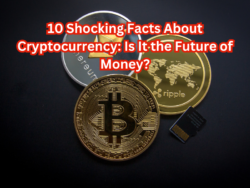Top 10 Most Spectacular Geological Wonders
Our planet is a masterpiece of natural art, sculpted over millions of years into breathtaking landscapes that defy imagination. From towering mountains to deep, mysterious caves, Earth’s geological wonders are as diverse as they are magnificent. These natural formations not only offer a visual feast but also provide invaluable insights into the Earth’s past. In this list, we delve into the top 10 most spectacular geological wonders, each a testament to the raw power and artistry of nature. Prepare to be awed by these marvels that showcase the Earth’s geological diversity and history.
1. Giant’s Causeway, Northern Ireland

The Giant’s Causeway is an area of about 40,000 interlocking basalt columns, the result of an ancient volcanic fissure eruption. Legend has it that it was built by giants, but in reality, it’s a masterpiece of volcanic activity. Its unique, hexagonal columns descending into the sea create a staircase for the giants, according to myth.
2. Great Barrier Reef, Australia

The Great Barrier Reef is the world’s largest coral reef system, composed of over 2,900 individual reefs and 900 islands stretching for over 2,300 kilometres. This underwater spectacle hosts a kaleidoscope of marine life and is known for its vibrant coral gardens. Its sheer size and diversity make it one of the most complex natural ecosystems on Earth.
3. Mount Everest, Nepal/China
Mount Everest, part of the Himalayan Range, stands as a testament to the colossal forces of nature. Rising 8,848 meters above sea level, it’s the highest point on Earth. Its formation is the result of the Indian and Eurasian tectonic plates colliding, and it continues to grow taller each year, making it an ever-evolving geological wonder.
4. Salar de Uyuni, Bolivia

Salar de Uyuni, the world’s largest salt flat, is a marvel to behold. Spanning over 10,000 square kilometres, this vast white expanse was formed by prehistoric lakes that evaporated over time. During the rainy season, it transforms into a giant mirror, reflecting the sky in a way that defies the boundaries between heaven and earth.
5. Antelope Canyon, USA

Antelope Canyon is a slot canyon carved by water and wind over millions of years. Located in Arizona, its narrow passageways and smooth, wave-like walls create a surreal landscape. The way sunlight dances off its walls, creating different hues, makes this a photographer’s paradise.
6. The Grand Canyon, USA
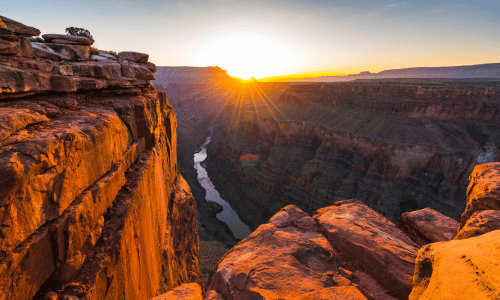
The Grand Canyon is not just a spectacular sight; it’s a journey through time. Carved by the Colorado River over millions of years, this immense chasm stretches for 277 miles. Its stratified bands of colourful rock reveal the history of the Earth’s crust. Visitors are captivated by its immense size and its intricate and colourful landscape.
7. Victoria Falls, Zambia/Zimbabwe

Victoria Falls, known locally as Mosi-oa-Tunya or “The Smoke That Thunders,” is one of the largest and most famous waterfalls in the world. The falls form the largest sheet of falling water during the rainy season and are a stunning example of erosive power and the beauty of nature’s artwork.
8. Zhangjiajie National Forest Park, China
Zhangjiajie National Forest Park, recognized as a UNESCO World Heritage site, is famed for its towering sandstone pillars, some reaching over 1,000 meters in height. These pillars are believed to have inspired the floating mountains seen in the movie “Avatar.” The area’s natural beauty is complemented by lush vegetation and diverse wildlife.
9. Pamukkale, Turkey

Pamukkale, meaning “cotton castle” in Turkish, is renowned for its white terraces and warm, mineral-rich waters. These stunning terraces are made of travertine, a sedimentary rock deposited by water flowing from hot springs. It’s not only a visual treat but also a historical one, with the ancient ruins of Hierapolis located on its crest.
10. Valle de la Luna, Chile

Valle de la Luna, or Valley of the Moon, offers a landscape so surreal it’s compared to the surface of the moon. Located in the Atacama Desert, the world’s driest desert, its sand and stone formations have been sculpted by water and wind over centuries. The valley’s dry, moon-like terrain is dotted with various stone and sand formations, salt lakes, and even caves.
The Earth’s geological wonders are a testament to the dynamic, ever-changing nature of our planet. Each site on this list offers a unique window into the Earth’s geological past and presents an awe-inspiring glimpse of nature’s artistry. From the towering peaks of Mount Everest to the serene beauty of Salar de Uyuni, these wonders remind us of our planet’s capacity for breathtaking beauty. Explore, marvel, and respect these wonders, for they are the great sculptures of nature’s own hand.
We’ve reached the end of our Top 10 countdown, and we’d love to hear from you! Do you agree with our choices, or is there something we missed that you feel deserves a spot on this list? Let’s start a conversation – comment below with your thoughts and ideas. Your input might just influence our next Top 10!
If you like this, you might like the Top 11 biggest storms ever recorded in the World


